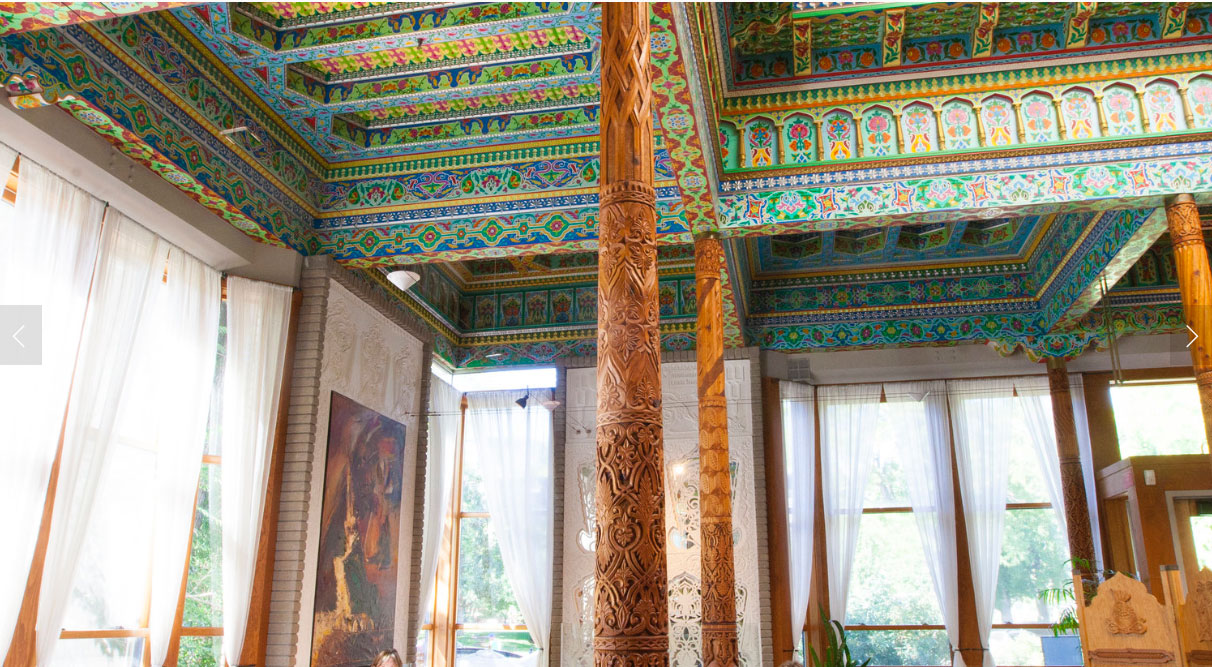In a first, Boulder landmarks Dushanbe Teahouse interior

Friday, Nov. 20, 2020
A unanimous vote by elected officials did what has never been done before in Boulder: Designate the inside of a building as an historic landmark. The iconic Dushanbe Teahouse will become the city’s youngest landmark, preserved from exterior and interior change.
The building, owned by the city and situated on city land, was never under threat of redevelopment. Nonprofit Friends of the Boulder-Dushanbe Teahouse pushed for landmark status — including of the hand-carved and tiled interior.
“People come and go, councils change, entrepreneurs change,” said resident Joe Stepanek. It’s very important to have high written standards that is all-inclusive.”
Though other cities routinely include interiors in landmarks, Boulder’s historic preservation laws had never before been interpreted to cover the inside of a structure. The city attorney’s office recommended against it.
But just because they haven’t doesn’t mean they couldn’t, councilman Mark Wallach argued in October. On Tuesday, he and other council members restated their belief that the situation was unique enough to warrant extraordinary action.
“To a great extent, this is a one-off,” Wallach said. “It may never come up again, but this is a building that should be protected.”
Read a live-tweet thread of Tuesday’s meeting
Typically, the insides of historic buildings are not considered because historic preservation is about balancing public good with private property, said James Hewat, senior historic preservation planner for the city. The “vast majority” of Boulder 1,700 or so designated buildings — just over 1,400 individual landmarks and the rest in historic districts — are privately owned; the public doesn’t have access to and in many cases will never see the interior.
“There really are a handful of publicly owned buildings that are landmarked,” Hewat said. “This is a public building and is in full public use. I think in this case there was a special consideration given. … The ordinanceA piece of municipal (city-level) legislation. was written in such a way to make it clear this was a special circumstance.
I think city council made that clear.”
The ordinance included language about a new interpretation of Boulder Revised Code 1981, but also included references specific to the Teahouse and an additional line laying out council’s intent.
“B.R.C. 1981 shall be interpreted to apply to the exterior and interior of the building,” it reads. “The definition of “alteration” in 9-16-1, “Definitions,” B.R.C. 1981 shall be interpreted to apply to the interior of the Pavilion portion of the Teahouse, to include any application of paint, and shall not be limited with regard to whether alterations are visible from the public right-of-way. …
The City Council recognizes the unique features and circumstances of the Teahouse that are identified in this ordinance and does not intend to create a precedent for the landmarking of interiors in future cases.”
City Attorney Tom Carr in October said he wasn’t worried about setting a legal standard, but about eroding trust in the government by expanding powers without a public process.
The law “has never been interpreted to cover interiors, ever,” Carr said, though there “have been attempts” to do so. “When the community comes to trust the language of the law to be a certain way, before we change it we take community input to do so. We don’t just do it randomly.”
“I’m not worried about precedent; I’m not worried about us getting sued. I’m worried about community trust in the way we construe laws in Boulder.”
The landmark won’t be final until council passes it on third reading at their Dec. 1 meeting.
— Shay Castle, boulderbeatnews@gmail.com, @shayshinecastle
Want more stories like this, delivered straight to your inbox? Click
here to sign up for a weekly newsletter from Boulder Beat.
Landmarking architecture Boulder Boulder-Dushanbe Teahouse city council city of Boulder Dushanbe Friends of the Boulder-Dushanbe Teahouse historic landmark historic preservation Mark Wallach Tajikistan Teahouse Tom Carr

